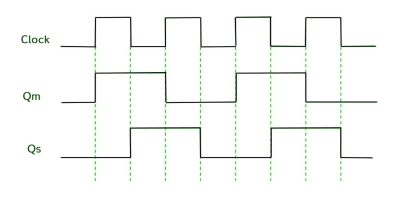Unit - 3
Sequential circuits and systems
Q1) Explain the working of S-R latch.
A1) SR Latch is a circuit which has:
(i) 2 cross-coupled NOR gate or NAND gate.
(ii) 2 input S for SET and R for RESET.
(iii) 2 output Q and Q’.
Q | Q’ | STATE |
1 | 0 | Set |
0 | 1 | Reset |
Under normal conditions, both the input remains 0.
RS Latch with NAND gates:
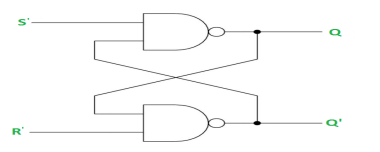
Case-1: When S’=R’=1 or S=R=0 then
If Q = 1, Q = R’ = 1.
If Q = 0, Q = 0 and R’ = 1 respectively.
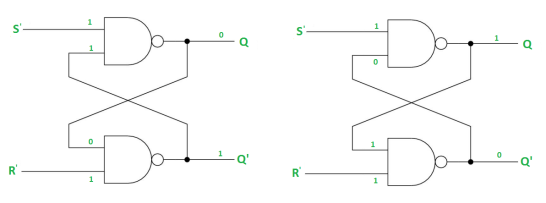
Case-2: S’=0, R’=1 (S=1, R=0)
As S’=0, Q = 1(SET state).
In 2nd NAND gate, as Q = R’ = 1, Q’=0.
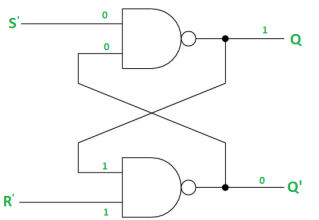
Case-3: S’= 1, R’= 0 (S=0, R=1)
As R’=0, Q’ = 1.
In 1st NAND gate, as Q =S’ = 1, Q=0 (RESET state).
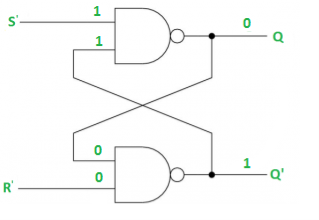
Case-4: S’= R’= 0 (S=R=1)
When S=R=1, both Q = Q’ = 1 which is not allowed.
So, this input condition is prohibited.
The SR Latch using NOR gate is:
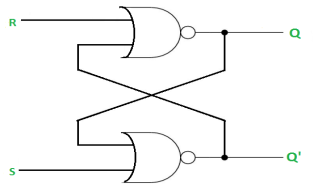
Q2) Convert SR to JK Flipflop
A2)
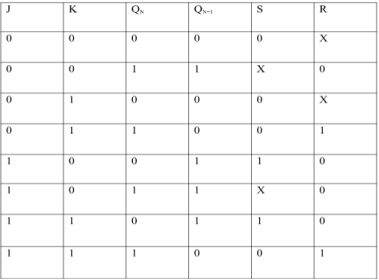
Excitation Functions:
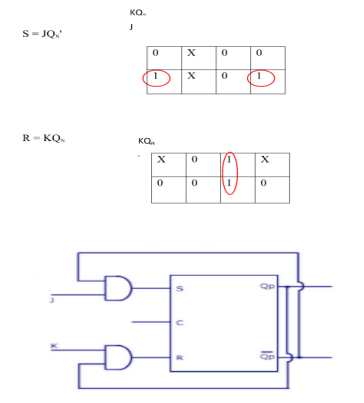
Q3) What are shift registers? Write its types.
A3)
The registers which shift the bits towards right are called “Shift right registers”.
Shift registers are of 4 types and they are:
Q4) Draw and explain ring counter in detail.
A4)
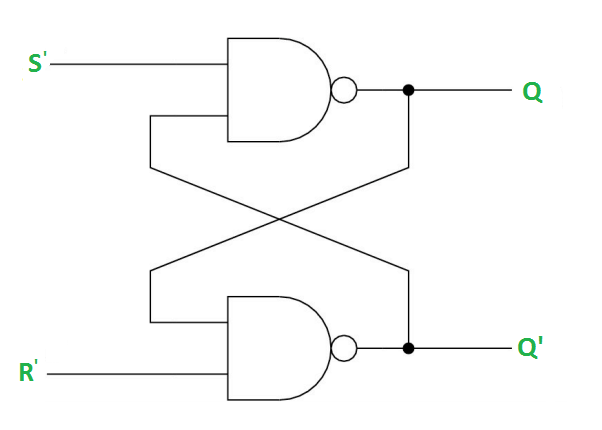

Ring counter
Q5) What are the steps to design non-overlapping 101 Mealy sequence detector?
A5) Step 1: Development of the state diagram –
The state diagram of a Mealy machine for a 101-sequence detector is:
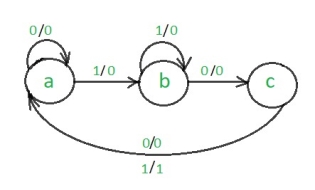
Step 2: Assignment of the code–
Rule 1: States having the same next states for a given input condition should have adjacent assignments.
Rule 2: States that are the next states to a single state must be given adjacent assignments.
Rule 1 given preference over Rule 2.
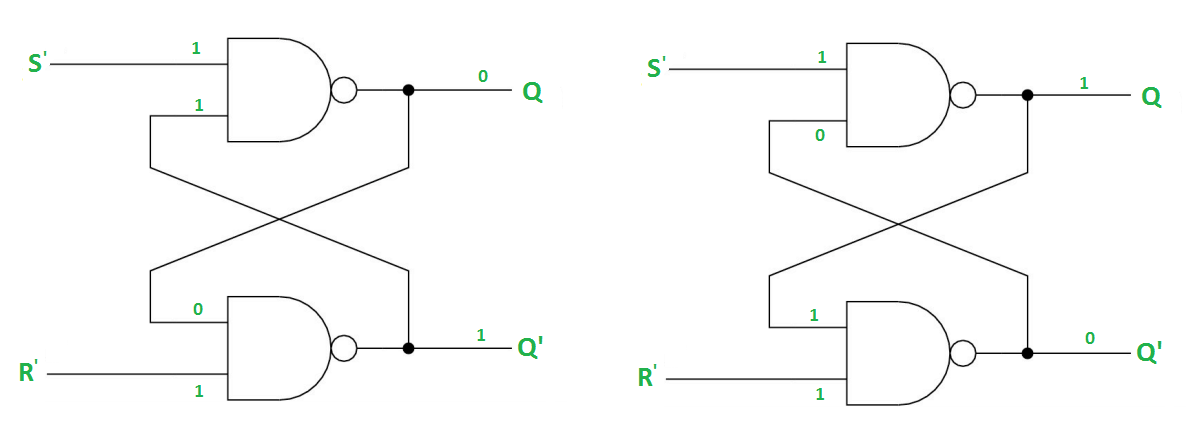
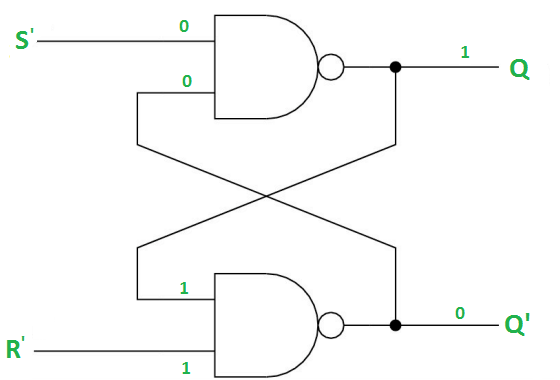
The state diagram after the code assignment is:
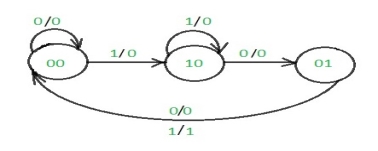
Step 3: Making Present State/Next State table –
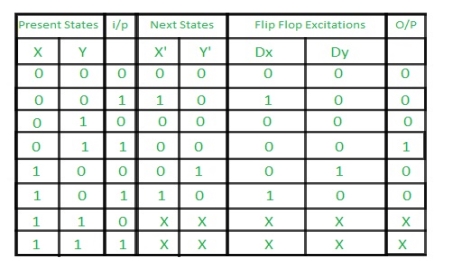
Step 4: Draw K-maps for Dx, Dy and output (Z) –
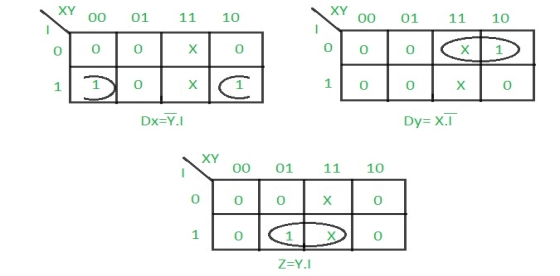
Step 5: Final implementation of the circuit –
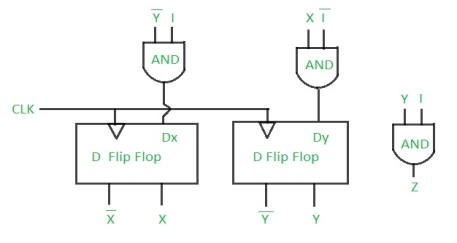
This is the desired circuit for a Mealy 101 non overlapping sequence detector.
Q6) Name some of the applications of counter.
A6)
Q7) Explain asynchronous counters.
A7)
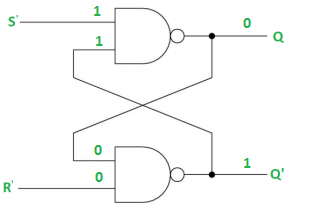
Asynchronous counter
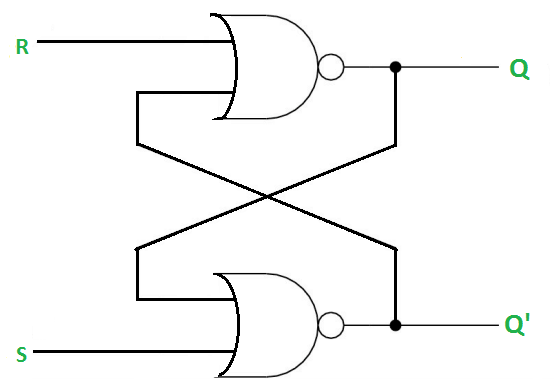
Timing diagram of Asynchronous counter
In this way ripples are generated through Q0, Q1, Q2, Q3 and therefore it is also called as a RIPPLE counter.
Q8) Explain sequence generator with examples.
A8)
For non-overlapping case
Input :0110101011001
Output:0000100010000
For overlapping case
Input :0110101011001
Output:0000101010000
Q9) Convert SR to D Flipflop.
A9)
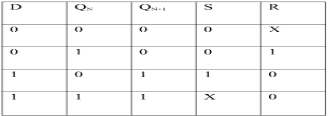
Excitation Functions:
S = D
R = D ‘

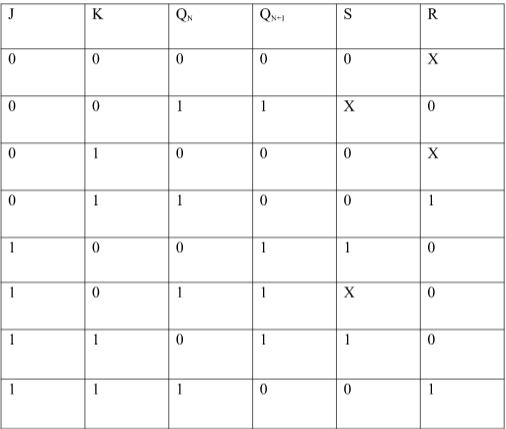
Q10) Explain master slave flipflop with timing diagram.
A10)
Timing Diagram of a Master flip flop –
